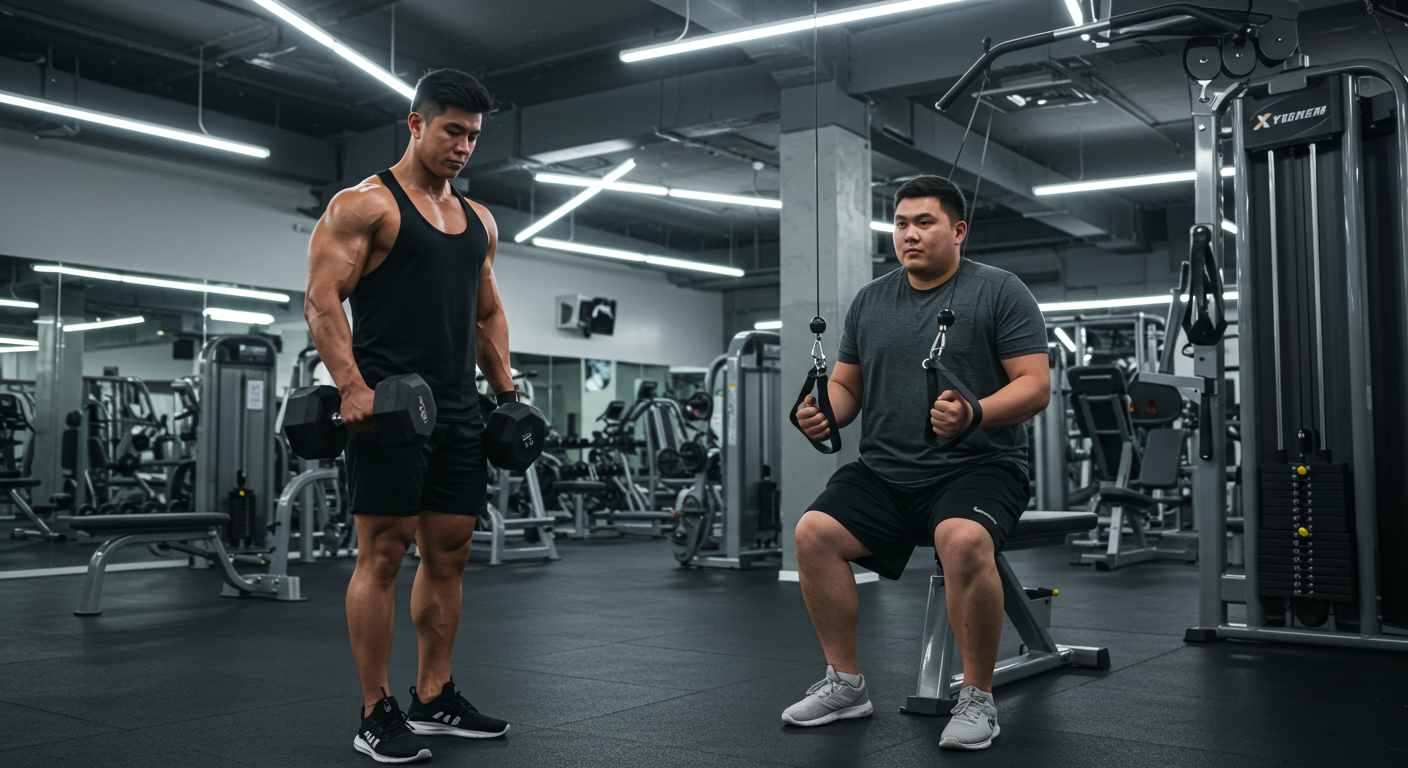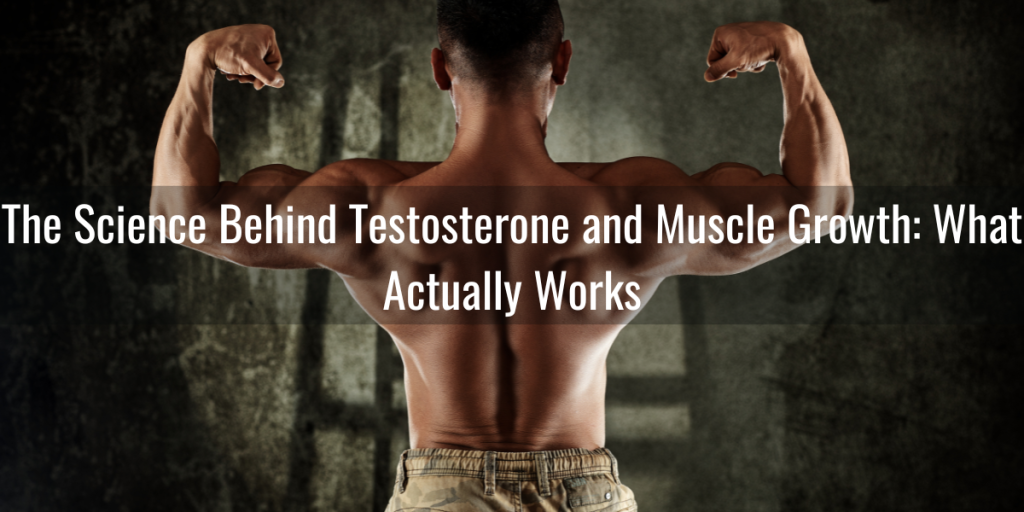When it comes to building muscle, testosterone is often the first hormone that comes to mind. For men, especially those in their thirties and beyond, this hormone plays a powerful and sometimes overlooked role in how the body responds to exercise, diet, and recovery. Testosterone influences mood, energy, and even the body’s ability to handle stress. As levels shift with age or lifestyle, so does the body’s capacity to grow, repair, and maintain lean mass.
This blog takes a closer look at how testosterone actually works to support muscle development. Instead of breaking the science into fragments, we’ll explore the full picture: how testosterone interacts with muscle cells, how lifestyle affects hormone production, and what you can do if your levels are holding you back.
Understanding the Basics
Testosterone is an androgenic hormone primarily produced in the testes and, to a lesser extent, in the adrenal glands. It’s responsible for male secondary sex characteristics, but its role in muscle building is one of the most talked about and scientifically verified functions.
The hormone enters muscle cells and binds to androgen receptors, which then trigger the machinery that promotes muscle growth. This isn’t a one time switch. It’s a constant interaction between hormonal signals and the body’s adaptation process.
Muscle Growth Starts at the Cellular Level
When you train, especially with resistance exercises like squats, deadlifts, or presses, you cause microtears in your muscle fibers. The body responds by initiating a repair process. This is where testosterone steps in. It enhances protein synthesis, the process by which new muscle fibers are created to repair or replace damaged ones.
Testosterone also stimulates satellite cells, which act like muscle stem cells. These help generate new muscle tissue, increasing both size and strength over time.
But muscle growth isn’t just about adding bulk. Testosterone also improves neuromuscular efficiency. It helps the brain send stronger, faster signals to the muscles, increasing coordination, reaction time, and force output. These small advantages can make a big difference over time, especially in strength or performance focused training.
The Decline: Subtle but Meaningful
Most men begin to experience a gradual decline in testosterone after age 30. The drop is slow, around one percent per year, but by your mid forties, it can add up to a noticeable difference. What once felt like a simple gym session now requires extra effort. Recovery takes longer. Muscle mass becomes harder to maintain, even with a consistent workout routine.

This doesn’t mean you stop building muscle entirely. But it does mean your baseline has shifted. The same training plan might not yield the same results it once did. And for some men, low testosterone can show up as more than just a plateau. It can lead to fatigue, reduced drive, and even mood changes that affect your consistency and motivation.
Also Read:
- Hormone Optimization vs Viagra
- Timeline of Testosterone Replacement Therapy
- Symptoms of Low Testosterone in Men
Why Sleep, Stress, and Diet Matter
It’s tempting to focus solely on workouts and supplements, but testosterone is closely tied to your overall lifestyle. Poor sleep quality, for example, has an immediate impact. Deep sleep is when testosterone production peaks. Losing just an hour or two of quality sleep each night over a week can decrease testosterone levels by up to 15 percent.
Stress, too, plays a critical role. When you’re under constant stress, your body releases more cortisol. This stress hormone directly interferes with testosterone production. Worse, cortisol is catabolic, meaning it contributes to muscle breakdown. A high stress, low recovery lifestyle is a recipe for hormonal imbalance and stalled progress in the gym.

Then there’s diet. Fats, especially saturated and monounsaturated fats, are essential for testosterone synthesis. Low fat diets may seem appealing for weight control but can backfire hormonally. Deficiencies in zinc, magnesium, and vitamin D are also linked to reduced testosterone levels, yet these nutrients are commonly overlooked.
What Happens When Levels Drop Too Low
Some men have more than a mild decline. Clinical low testosterone, also known as hypogonadism, is typically diagnosed when total testosterone falls below 300 ng/dL. Symptoms vary, but they often include persistent fatigue, loss of muscle mass, increased fat gain (particularly around the abdomen), poor concentration, and low libido.
Even if you’re training hard and eating well, low testosterone can prevent your body from responding effectively.
Muscle protein synthesis slows. Recovery becomes incomplete. Gains are minimal, and workouts feel like maintenance rather than progress. Studies show that men with low testosterone can experience up to 50 percent less muscle growth from strength training compared to those with healthy levels.
Can Therapy Make a Difference?
For men diagnosed with low testosterone, hormone replacement therapy can be a game changer. Clinical trials have shown that men who undergo testosterone therapy gain more lean muscle mass and reduce fat mass compared to placebo groups. The changes are usually gradual, becoming more noticeable around the 8 to 12 week mark. In many cases, men also report improved energy, better mood, and increased drive, both in and out of the gym.
It’s important to note that testosterone therapy isn’t about achieving superhuman gains. It’s about restoring your body to a functional, healthy range so it can respond to training the way it should. It’s a supportive tool, not a shortcut. The most effective results happen when therapy is paired with quality sleep, resistance training, good nutrition, and stress management.
We offer personalized Testosterone Therapy in San Diego, CA to help men restore energy, build lean muscle, and feel like themselves again.
The Bottom Line
Building muscle is more than just lifting weights. It’s a biological process deeply influenced by hormonal balance. Testosterone acts as a powerful internal driver, supporting everything from recovery to muscle activation to motivation. As natural levels decline, it becomes harder to make consistent progress, but not impossible.
Through smart lifestyle habits and, when appropriate, medical support, men can continue to build and maintain muscle well into their forties, fifties, and beyond. Testosterone is not the only factor, but it is a major one. Understanding how it works, what affects it, and how to optimize it gives you an edge.
At Katalyst Wellness, we specialize in helping men navigate hormonal changes with science backed protocols and personalized care. If you feel like your body isn’t responding the way it used to, it might be time to explore what your testosterone levels are telling you.
Frequently Asked Questions
How does testosterone affect muscle growth?
It enhances protein synthesis, improves muscle repair, and increases satellite cell activity. It also improves nerve muscle communication and reduces muscle breakdown.
Can I build muscle with low testosterone?
Yes, but it’s more difficult. Results are often slower and less significant unless levels are restored through lifestyle changes or therapy.
How soon will I see results with testosterone therapy?
Many men notice changes in energy and mood within a few weeks. Muscle growth tends to become noticeable after two to three months.
Do I need to take supplements?
Supplements like zinc, magnesium, and vitamin D can help support testosterone production. However, they are most effective when paired with overall healthy habits.
Does age make it impossible to gain muscle?
No. With the right hormonal support and training plan, men in their forties and fifties can gain muscle just as effectively as younger men.
Is testosterone therapy safe?
When prescribed and monitored by a qualified provider, therapy is safe and effective. Regular bloodwork ensures everything stays within a healthy range.
How often should I test my hormones?
Once a year is a good starting point. If you begin therapy, testing is usually done every three months at first, then every six to twelve months.
What are the signs of low testosterone?
Fatigue, muscle loss, poor concentration, mood swings, increased belly fat, and low libido are common indicators.
Can women benefit from testosterone too?
Yes. In small, controlled doses, testosterone can support libido, energy, and muscle tone in women, particularly after menopause.
Is testosterone therapy the same as using steroids?
No. Therapeutic doses aim to restore natural hormone levels, not exceed them. It’s about health and function, not performance enhancement.
Final Thoughts
If you feel like your workouts aren’t producing the results they used to, your testosterone might be part of the equation. It’s not the only factor in muscle growth, but it plays a crucial role. By understanding how testosterone works and how it changes over time, you can take proactive steps to stay strong, lean, and energized.
Support your body with good sleep, balanced nutrition, and focused training. And if you need more support, don’t hesitate to get your hormones checked. Knowing your numbers is the first step to unlocking your full potential.
Schedule your consultation today to find out if testosterone therapy is right for you and start feeling your best again.




